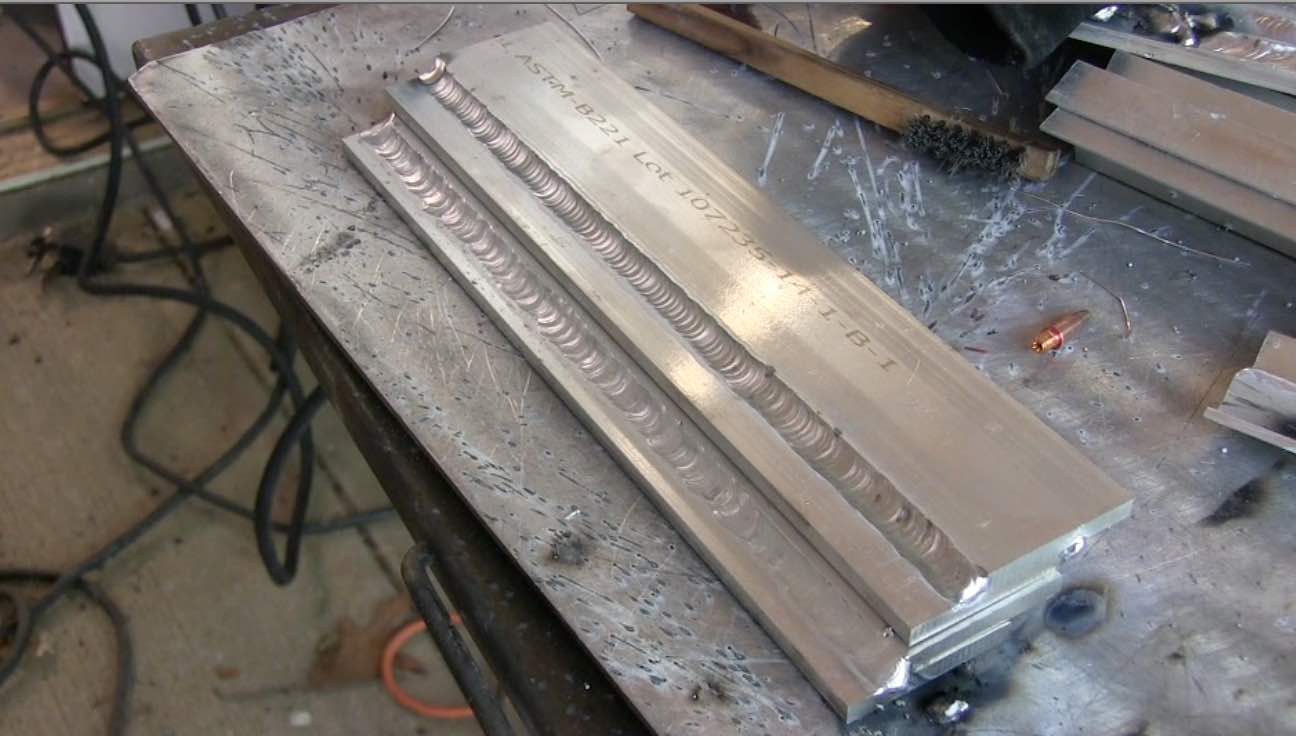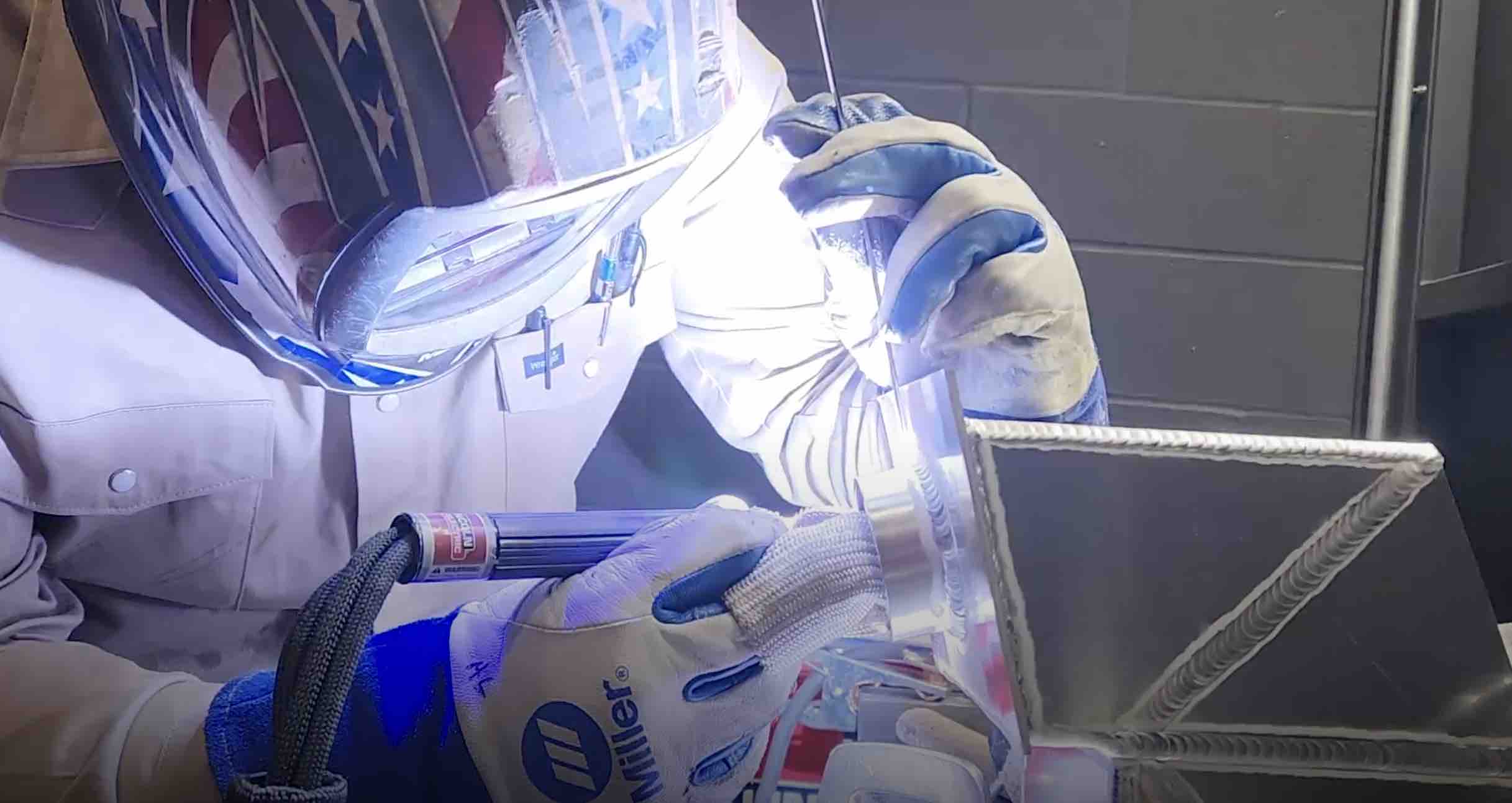Welding Aluminum with MIG spool gun vs TIG
- HOME
- TIG WELDING ALUMINUM
- How to Tig Aluminum
- Welding Aluminum
I was at a friends shop recently welding aluminum... some 3" x 1/8" wall square tubing...and was using a 200 amp tig welder.
Some comments came in on my youtube channel asking why we didnt just MIG weld all of it using a spool gun.
So I thought it might be interesting to compare Welding aluminum with a spool gun to TIG.
see more tig welding aluminum videos or go to the main TIG welding page
A Past Video about Welding with a Spool Gun
Visit the Weldmonger Store for Welding Accessories
Maybe we can answer some questions and all learn something in the process.
Like...Is MIG faster? Is TIG better? that sort of thing
MIG Welding Aluminum with a spool gun
I have MIG welded aluminum without a spool gun but found that the results just were not worth the aggravation.
I worked at a sheet metal fab shop a long time ago and they had an old Linde mig welder set up with a teflon liner and a special weak tensioner spring for aluminum wire.
If you leaned the gun back to let an inch or so of wire to feed before starting the arc, sometimes you could get a decent bead with a burnback. But most of the time, I would go thru a few tips on the simplest job.
I hated it that thing.
A spool gun setup works much better.
I even have a very nice push pull setup on my Lincoln Power Mig 350mp that has special settings like run-in and crater fill.
But for todays video, I am using a small economical spool gun setup on the smaller 210mp.
General Tips for Mig welding aluminum with a spool gun
- have plenty of contact tips on hand
- push dont pull
- keep a stainless wire brush handy for soot
- use pure argon...not c25
- use the largest diameter wire that is practical
- Think hard before welding thinner than 1/8" (3.2mm)
- aim for a 3/4" stickout
- set machine for a hum or hiss...not crackle
Everything seems to make more of a difference when you mig weld aluminum.
Stickout, gun angle, gas flow...all seem to make more of a difference on aluminum than on steel.
You will have burnbacks and so you need to have new contact tips on hand.
With steel, gun angle matters but not nearly as much as it does when you are welding aluminum. So try to always use a push angle.
A pull angle will cause soot. not the end of the world, but you can avoid soot if you push and have good gas coverage.
keep a small stainless brush handy for the soot.
Maybe it goes without saying but use pure argon or an argon/helium mix...dont even try using the same C25 you use for steel.
Aluminum wire is soft. that is why spool guns were invented. so use the largest diameter wire that runs good for the application.
Rule of thumb is 1/8" (3.2mm) and thicker for a spool gun. anything thinner requires finesse.
a 3/4" stick out is about right for a spool gun. experiment.
spray transfer gives a hiss or humming sound, dont shoot for that bacon frying sound that would strive for on short circuit mig
TIG vs MIG

MIG is usually faster but is not always a lot faster.
For the 1/4" (6mm) lap joint shown in the video the Mig joint took 45 seconds...The TIG weld took 60 seconds.
I prefer to TIG whenever I can, but there are times when Mig with a spool gun is the way to go.
In the part video of the Aluminum Awning Project, you will see JD hanging the awning in place at the job site and running his Power Mig 210mp using a generator.
A spool gun is generally faster than TIG welding for welding aluminum, but this is not always the case. The speed advantage depends on several factors, including the specific application, material thickness, and desired or required weld quality.
lets take a closer look at why a spool gun is typically faster and when TIG welding might be preferred:
Why a Spool Gun is Typically Faster:
- Higher Deposition Rate:Spool guns, which are used with MIG (GMAW) welding, have a higher deposition rate compared to TIG welding. This means more filler material is laid down in less time, speeding up the welding process.
- Ease of Use:MIG welding with a spool gun is generally easier to learn and faster to set up compared to the precise and often slower process of TIG welding. This ease of use translates to faster welding times, especially for less experienced welders. Someone who is proficient at mig welding steel, can usually learn to mig weld aluminum quickly.
- Continuous Feed:The continuous feed of wire from the spool gun allows for uninterrupted welding, reducing downtime and increasing overall speed.
When TIG Welding Might Be Preferred
- Precision and Control:TIG welding offers greater precision and control over the welding process, which is crucial for high-quality, aesthetically pleasing welds. This is especially important for thinner aluminum materials and applications where the appearance of the weld is critical.
- Heat Control:TIG welding allows for better control over heat input, reducing the risk of warping or overheating the aluminum. This is important for thin materials and intricate welds.
- Weld Quality:For applications requiring the highest weld quality and minimal defects, TIG welding is often the preferred method despite being slower. It produces cleaner welds with fewer inclusions and better overall appearance.
Bottom Line
While a spool gun is generally faster than TIG welding for aluminum due to its higher deposition rate and ease of use, the choice between the two methods should be based on the specific requirements of the job. For projects where speed and productivity are prioritized, such as in manufacturing and fabrication, a spool gun is the better option. However, for applications requiring precision, high-quality welds, and better heat control, TIG welding remains the preferred method, even though it is slower.














